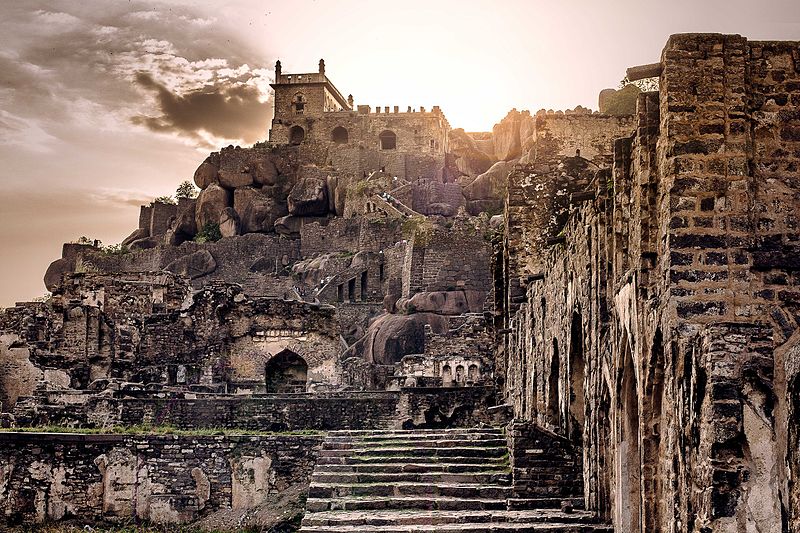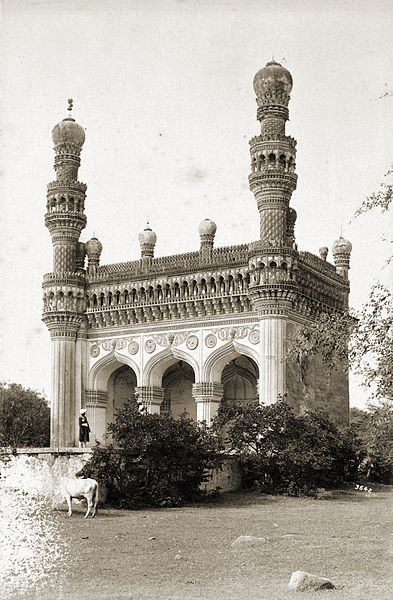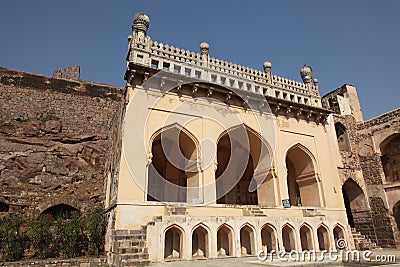Asaf Jah II : the second Nizam of Hyderabad

Nizam Ali Khan, painting, late 18th century,Hyderabad.
Av Ukjent - The San Diego Museum of Art, Offentlig eiendom, https://commons.wikimedia.org/w/index.php?curid=28942229

Asaf Jah II,portrait.
By Unknown - hyder5, Public Domain, https://commons.wikimedia.org/w/index.php?curid=27106739


Top ka sancha or Gunfoundry at Hyderabad.
By MIT Libraries - http://dome.mit.edu/handle/1721.3/20032, Public Domain, https://commons.wikimedia.org/w/index.php?curid=25279442

Monsieur Raymond's tomb,Hyderabad.
By Bhaskaranaidu - Own work, CC BY-SA 3.0, https://commons.wikimedia.org/w/index.php?curid=21465339
Asaf Jah I ruled the state of Deccan as an able statesman. He died at Burhanpur in 1748 at the age of 78. After he died there was a struggle for the throne. The following thirteen years saw different rulers for short spans of time. During this time foreign powers had started gaining some control of Indian affairs. The second son of Asaf Jah I, Nasir Jung was supported by the British. The grandson Muzaffar Jung, his grandson was supported by the French. Nasir Jung succeeded in occupying the throne for some time, but but was killed at Arcot in 1750 in an encounter with the French. Muzaffar Jung occupied the throne but was murdered the following year. Then his son Salabat Jung occupied the throne. He was dethroned by his brother Nizam ali Khan in 1762. He died in confinement at Bidar in 1763.
Nizam Ali Khan born in 1734, was Nawab Mir Nizam Ali Khan Siddiqui Bayafandi Bahadur Asaf Jah II, became ruler in 1762 and ruled for forty years. Initially he was the faujdar of the Deccan in 1759. He had earned a good reputation by fighting the Marathas. However, he faced some defeat at the Battle of Udgir after the assasination of Alamgir II. Mughal Emperor Shah Alam II made him subahdar of the Deccan after Nizam Ali Khan siezed the Bidar Fort and confined Salabat Jung.In 1763 the Nizam was defeated by Madhavrao II at the Battle of Rakshabhuvan and entered in to an agreement with the Marathas. His military guide was Monsieur Raymond, a French General in his army. He was the founder of the Gunfoundry in Hyderabad. Son of a merchant,he had come to India along with his brother from France in 1775. He became a soldier under General Bussy at Pondicherry. However later in 1786 he met the Nizam and joined as a soldier. Again in 1795 at the Battle of Kharda the Nizam lost to the Marathas and had to cede Daulatabad,Aurangabad and Sholapur. Monsieur Raymond became Amar-e-jinsi or Comptroller of Ordinance in 1796. Monsieur Raymond died mysteriously in 1798 when he was a commander of 14,000 men. He was fondly called Mussa Ram or Mussa Rahim (Monsieur Raymond ) and the area where his tomb is located is called Moosarambagh at Hyderabad.

Nizam Ali Khan, painting, late 18th century,Hyderabad.
Av Ukjent - The San Diego Museum of Art, Offentlig eiendom, https://commons.wikimedia.org/w/index.php?curid=28942229

Asaf Jah II,portrait.
By Unknown - hyder5, Public Domain, https://commons.wikimedia.org/w/index.php?curid=27106739
Later the Nizam Ali Khan entered in to an alliance with the British East India Company and Hyderabad became a large princely state within the British Raj. Nizam Ali Khan, Asaf Jah II died in 1803 at Chowmahalla Palace at Hyderabad.

Chowmahalla Palace, Hyderabad.
By Arshad Majeed (Own work) [CC BY-SA 3.0 (http://creativecommons.org/licenses/by-sa/3.0)], via Wikimedia Commons

Top ka sancha or Gunfoundry at Hyderabad.
By MIT Libraries - http://dome.mit.edu/handle/1721.3/20032, Public Domain, https://commons.wikimedia.org/w/index.php?curid=25279442

Monsieur Raymond's tomb,Hyderabad.
By Bhaskaranaidu - Own work, CC BY-SA 3.0, https://commons.wikimedia.org/w/index.php?curid=21465339
References :
- Hyderabad : a city in history/Khan, Raza Ali, Hyderabad : Zenith Services,1990.
- wikipedia.org
Posted by
Soma Ghosh
Ⓒ author

































